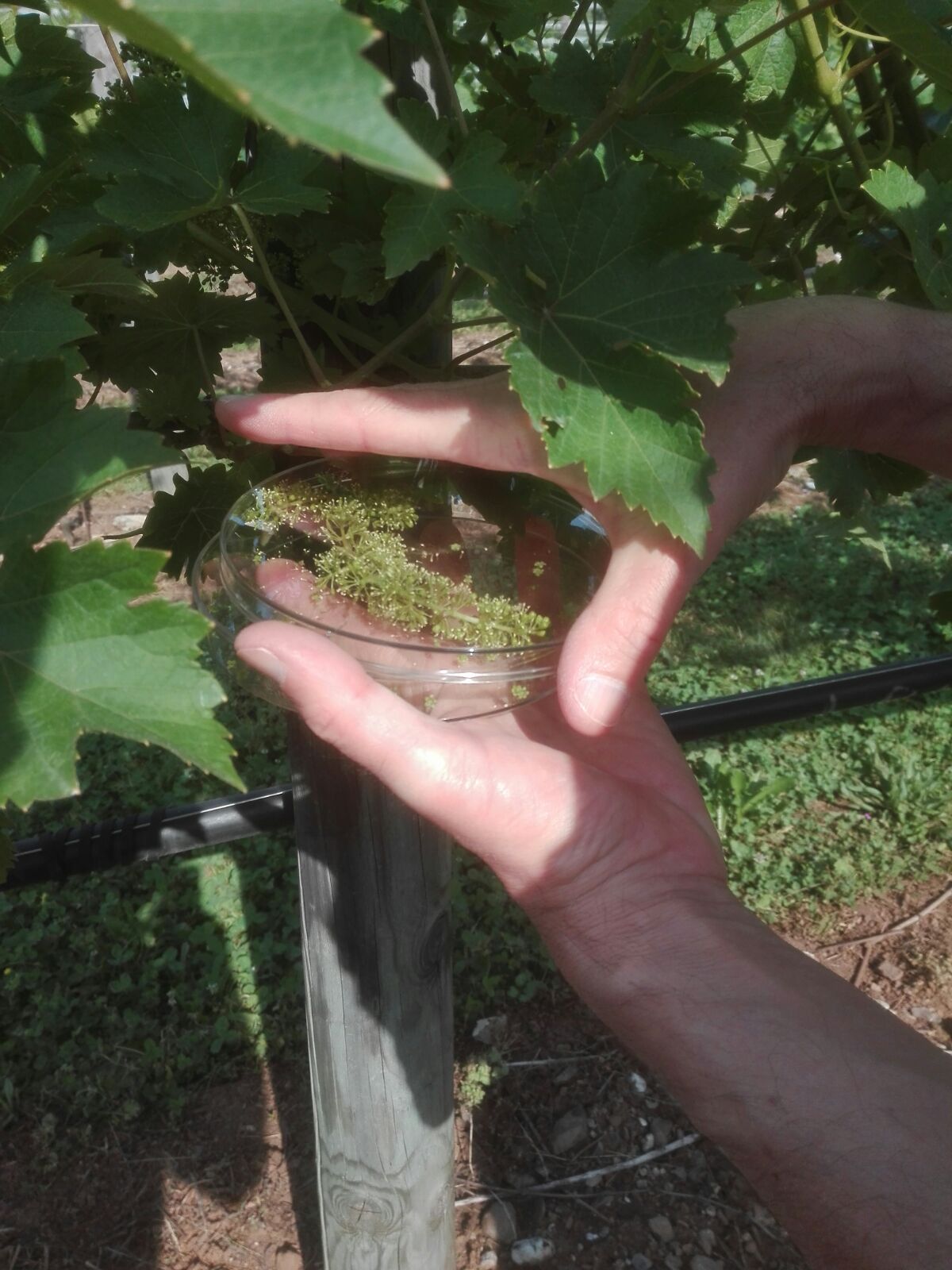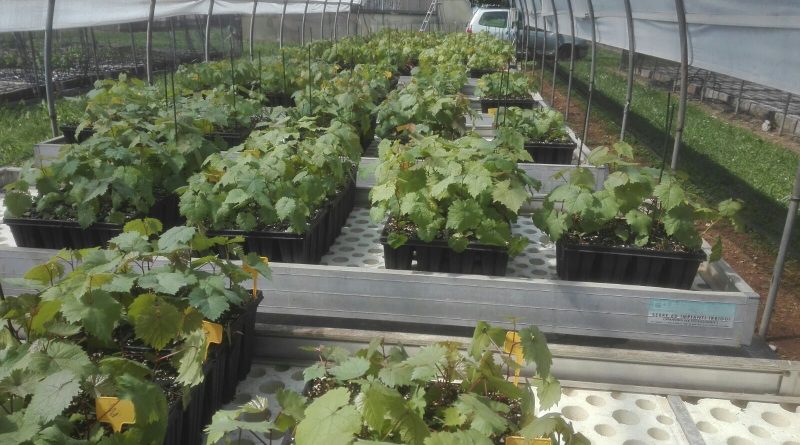Resistance to peronospora and oidium in grapevine: selection assisted by molecular markers
Resistance to peronospora and oidium in grapevine: selection assisted by molecular markers
In the vine production cycle (Vitis spp.), Phytosanitary control is fundamental, to preserve both the production and the quality of the grapes. Disease control, oidium and downy mildew in the first place, is mainly implemented through the use of chemical products. In recent years, however, efforts are being made to reduce chemical inputs in vineyard management for various factors, such as environmental impact issues, human health and even cost for farmers. A safe method to ensure abundant production, quality and with a minimum use of crop protection products is the use of genetically resistant varieties obtained by crossing.
The traditional breeding is too slow to make up for the constant search for new varieties with different characters while the selection carried out with molecular and genetic biotechnologies can greatly help the breeder in the perspective of genetic improvement. In this aspect, molecular markers are a huge potential to improve the efficiency and precision of conventional breeding through the so-called “molecular marker assisted selection” (MAS: marker assisted selection) which allows to apply a selection already in the first phases of growth by seeing the presence of the features of interest directly in the DNA.

Pollen collection
Introduce resistances
The aim of this work is to intrude in cultivated varieties, agronomically valid, resistance genes through the cross between varieties donating R genes and varieties, in fact, already in cultivation or cross different accessions of resistant species. Further, the objective is also to find different resistances in individuals so as to obtain the pyramidation of the R genes and then obtain varieties with a wider and more defensive resistance spectrum.

Portess emasculation
Materials and methods
The study began with the crossings between the varieties or accessions carrying the genes of interest and the variety to be improved. First the pollen was collected from the male parental and then the female parental was emasculated, then the artificial pollination was carried out and in the end the crossings were protected from external contamination. Once the crosses have been completed, at the end of the season the seeds have been extracted from the bunches and the new plants have been obtained from them. From the leaves of these new plants, DNA was extracted by Doyle and Doyle (1990) and then quantified. Subsequently, in order to verify the presence of the genes in question in the DNA, first of all the PCRs were made with the molecular markers for the genes in question, in order to amplify the traits of interest. Subsequently, from the PCR product, sequences of allelic fragments were sequenced by capillary electrophoresis.

Pollination
Results
A total of 8 crosses were carried out, 5 to improve the table grapes to obtain new varieties that would bring the resistance genes to pathologies and the character of apyrenia and 3 crossings to improve the variety of wine always with the resistance genes. In particular, as far as table grapes are concerned, the Sultanina and Moscato varieties have improved, in order to obtain similar but resistant varieties. Other intersections have foreseen the hybridization of different resistant accessions to create new varieties that bring resistance and apirenia character. As for the grapes for vinification, crossings were made to improve the Lambrusco varieties and the important Glera variety (whose wine is prosecco) with resistance genes donated by accessions that carry these genes into their genomes. Lastly, it was decided to obtain new varieties with all 3 downy mildew genes, crossing the already resistant Solaris variety, with another resistant accession.
This work of genetic improvement has been carried out because to date, in viticulture, 67% of all fungicides used in agriculture are used, bearing in mind that the area occupied by the vine is only 3.3% of the entire world agricultural area. Therefore the cultivation of the vine, especially as regards the protection against diseases, is delicate. The objective of this study was to obtain resistant varieties with important characteristics for the market, which therefore require a minimum use of fungicides in order to align themselves in a future Green perspective, thus following the Community directives.
In the work performed, for each family analyzed, fruit of the individual crosses, a large number of individuals in the progeny inherited the resistance genes.

Protection of crossings
Besides the excellent result of having obtained many resistant individuals in all the crossings carried out, a very important aspect is that, for each intersection, we have obtained a good number of individuals carrying different combinations of resistance genes and as many who have inherited all the genes present in the single intersection. In particular these are the results that must be taken into account. Obtaining varieties with pyramids more resistance to the same pathogen and at the same time more resistance against different pathogens is the best result one can have. These individuals will present a high degree of resistance and it will be more difficult for the pathogen to overcome these barriers by evolving through natural selection. These individuals with different pyramidal resistances are the starting point to continue with the genetic improvement also for further characters. In this work, we also obtained individuals who carried 3 resistance genes (between peronospora and oidium, in different combinations) and the tract of apyrenia.
The use of genetic knowledge and the modern molecular techniques to obtain improved varieties, as for the resistance to diseases, are, therefore, the most effective means we have available to obtain a drastic reduction in the use of chemical agro. Moreover, we can hypothesize to associate the characters of resistance with other characters for many important traits. In this way, growers, consumers and the environment will gain undoubted advantages in terms of public health and conservation of the ecosystem with a view to sustainable development.
Giovanni Mian
Bibliography
1. Caramelli David, Antropologia molecolare, Firenze University Press, 2009
2. EUROSTAT EC. The use of plant protection products in the European Union. Data 1992- 2003. Luxembourg: Office for Official Publications of the European Communities, 2007. ISBN 92-79-03890-7.
3. Bergamini et al, 2012. Validation assay of p3_VvAGL11 marker in a wide range of genetic background for early selection of stenospermocarpy in Vitis vinifera L
4. Jones JD, Dangl JL (2006) The plant immune system. Nature 444:323Kast WK, Stark-Urnau M, Seidel M, Gemmrich AR (2001) Interisolate variation of virulence of Plasmoparaviticola on resistant vine varieties. Bull OILB/SROP 24:45–49
5. Moroldo M, PaillardS,MarconiR,FabriceL,CanaguierA,Cruaud C etal. A physical map of the heterozygous grapevine ‘Cabernet Sauvignon’ allows mapping candidate genes for disease resistance. BMC Plant Biol 2008; 8: 66. 31
6. Velasco R, Zharkikh A, Troggio M, Cartwright D, Cestaro A, Pruss D et al. A high quality draft consensus sequence of the genome of a heterozygous grapevine variety. PLoS ONE 2007; 2: e1326.
7. Wan Y, Schwaninger H, He P, Wang Y. Comparison of resistance to powdery mildew and downy mildew in Chinese wild grapes. Vitis. 2007;46:132. 16.
Sitography
1) www.wikipedia.it
2) Rivistadiagraria.org
3) Agraria.org
4) Nature.com

